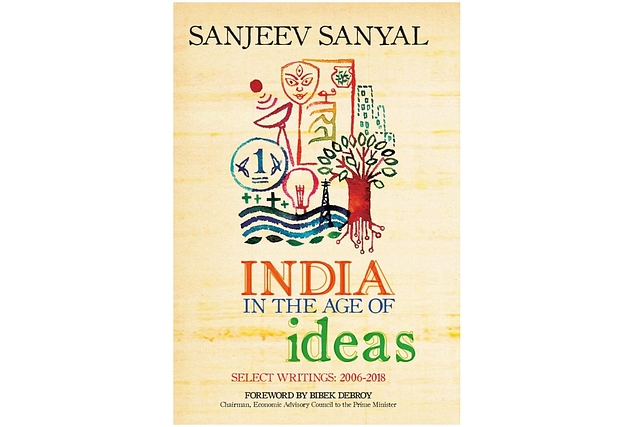
This Is Not A Book For Agenda-Seekers
Sanjeev Sanyal’s latest is for those wanting fact-based engagement with issues. Agenda seekers on both the left and right should stay away from this one.
India In The Age of Ideas: Selected Writings: 2006-2018. Sanjeev Sanyal. Westland. 336 pages. Rs 461.
Ever since the release of his bestsellers Land of the Seven Rivers and The Ocean of Churn, author and economist Sanjeev Sanyal has forayed into a wide variety of long form writing, which ranges from history of geography to sophisticated urban satire (last year’s Life over Two Beers). Nearly all his writings defy attempts to neatly pigeonhole them based on ideological or narrative lines. As he had told me in one of his interviews “everyone is entitled to their opinions but not their facts” and it is this fact based approach that stands out in India in the Age of Ideas (Westland, 2018) — a collection of his essays and op-eds written from 2006 to 2018.
Though the 66 essays divided into three sections (history and culture/urban dynamics/economics) cover topics ranging from Emperor Ashoka to the role of drainage systems in town planning and from India’s rising middle class to the great leaders like Nelson Mandela, a few common threads are immediately visible to a thoughtful reader.
Sanyal has been a student and proponent of the chaos theory, and consequently the complex adaptive system (CAS) forms the lens for his examination of all issues. Using the CAS framework requires changes of attitude from the thinkers as well, since you go from the Newtonian mechanical manager seeking equilibrium and closure, to a tinkerer — manager alternately merely observing and applying deft, strategic touches to a complex system in order to steer it into a zone of productive imbalance. And surprisingly, as esoteric or vague as some of it may sound, the fundamental principles sound practical and common-sense, when observed in action.
Sanyal’s musings, on the role slums play in the rise of metros, as well as rise of the new middle class, is as good an example of it as any. Instead of viewing slums as a blot on the urban landscape in need of eradication or viewing them merely as a theatre of poverty porn, the writer views many of India’s slums as the stepping stone to city life and middle class for many immigrants with an ecosystem and a commerce model of their own. With this in mind, he suggests managing the slums as a CAS ecosystem rather than viewing it as a problem to overcome.
The economics section too carries the same CAS-based view of world events ranging from Brexit to American trade in the era of Donald Trump. Once again, viewing the quest for equilibrium as largely a chimera, the author argues that all periods of economic expansions in history have been underpinned by disequilibrium.
In “The Left Paralysis”, Sanyal writes about how the Nehruvian worldview, so dominant in the post-Independence Indian intelligentsia, shaped the dismal economic growth for the first 50-odd years of independent India, and how instead of seeking solutions, terms like “Hindu rate of growth” were invented to shift the narrative from shortcomings of the leadership to “This is us” kind of hopeless despondency. The skew in the academia and the systematic cleansing of the non-Left thinkers out of the ecosystem means even today the debates remain constrained by the language and framework derived from the Left.
In the history and culture section, some themes we read in his previous books are revisited in various contexts. In “Ashoka the not so great”, the author presents compelling evidence about how the story of King Ashoka going through a change of heart, and embracing non-violence after the Kalinga War, is largely a myth with very little supporting evidence, and sufficient evidence to contradict it. And just as he did in the books, Sanyal keeps his tone painstakingly factual.
There is no rhetoric, no “look-how-they-lied- to-us” kind of breast-beating that we see all too often in these polarised times. People seeking facts will go away with a sense of fulfilment. Agenda seekers on either side may have a sense of disappointment. The essays dealing with the empires that we never learnt about in school/college history are revelatory, in that they would make one realise how the textbook history, largely Delhi-oriented, and one that sees ancient India as a landlocked nation subjected to perpetual invasions and conquests, presents a very misleading picture.
The maritime ventures of Indian empires remain among the most neglected chapters of Indian history and through his essays like “history of Indian ocean shows how old rivalries can trigger rise of new forces” Sanyal piques our curiosity about it.
There is a lot that is worth debating, arguing and discussing about in our discourse. At a macro level, a collection of writings like India in the Age of Ideas is a call to move away from ideologies and personalities and have fact-based discussion instead. This is a highly recommended read for both aspiring columnists as well as readers of the contemporary discourse.